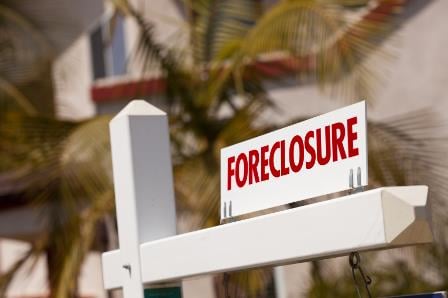The supply shortage limited the market to the most highly qualified borrowers

Foreclosure filings such as default notices, scheduled auctions, and bank repossessions declined in 2017 to their lowest level since 2005, according to the Year-End 2017 US Foreclosure Market Report released by ATTOM Data Solutions.
ATTOM found that foreclosure filings were reported on 676,535 properties in 2017, down 27% from 2016 and down 76% from a peak of nearly 2.9 million in 2010. Just 0.51% of housing units had a foreclosure filing in 2017, also a 12-year low.
"Thanks to a housing boom driven primarily by a scarcity of supply, which has helped to limit home purchases to the most highly qualified — and low-risk — borrowers, the US housing market has the luxury of playing a version of foreclosure limbo in which it searches for how low foreclosures can go," ATTOM Senior Vice President Daren Blomquist said.
Foreclosure starts, foreclosure auctions, and repossessions through foreclosures all dropped in 2017. Lenders started the foreclosure process on 383,701 properties in 2017, down 20% from 2016 to a new all-time low.
During the year, 318,165 properties were set for public foreclosure auction, which in some states is the same as a foreclosure start. The total is 27% lower than the 2016 figure, also declining to a new all-time low. Meanwhile, lenders repossessed 291,579 properties through foreclosure during the year, a decrease of 23% from 2016 to the lowest level since 2006, an 11-year low.
A number of states countered the national trend for each type of foreclosure filing. Foreclosure starts increased 54% in the District of Columbia. Scheduled foreclosure auctions were up 9% in New York to the highest level since 2006. New Jersey led the states with a year-over-year increase in REOs with a 19% increase to the highest level since 2006.
Related stories:
Hurricane season pushes mortgage delinquencies higher
Delinquencies, foreclosures at decade lows despite natural disasters – report
ATTOM found that foreclosure filings were reported on 676,535 properties in 2017, down 27% from 2016 and down 76% from a peak of nearly 2.9 million in 2010. Just 0.51% of housing units had a foreclosure filing in 2017, also a 12-year low.
"Thanks to a housing boom driven primarily by a scarcity of supply, which has helped to limit home purchases to the most highly qualified — and low-risk — borrowers, the US housing market has the luxury of playing a version of foreclosure limbo in which it searches for how low foreclosures can go," ATTOM Senior Vice President Daren Blomquist said.
Foreclosure starts, foreclosure auctions, and repossessions through foreclosures all dropped in 2017. Lenders started the foreclosure process on 383,701 properties in 2017, down 20% from 2016 to a new all-time low.
During the year, 318,165 properties were set for public foreclosure auction, which in some states is the same as a foreclosure start. The total is 27% lower than the 2016 figure, also declining to a new all-time low. Meanwhile, lenders repossessed 291,579 properties through foreclosure during the year, a decrease of 23% from 2016 to the lowest level since 2006, an 11-year low.
A number of states countered the national trend for each type of foreclosure filing. Foreclosure starts increased 54% in the District of Columbia. Scheduled foreclosure auctions were up 9% in New York to the highest level since 2006. New Jersey led the states with a year-over-year increase in REOs with a 19% increase to the highest level since 2006.
Related stories:
Hurricane season pushes mortgage delinquencies higher
Delinquencies, foreclosures at decade lows despite natural disasters – report



